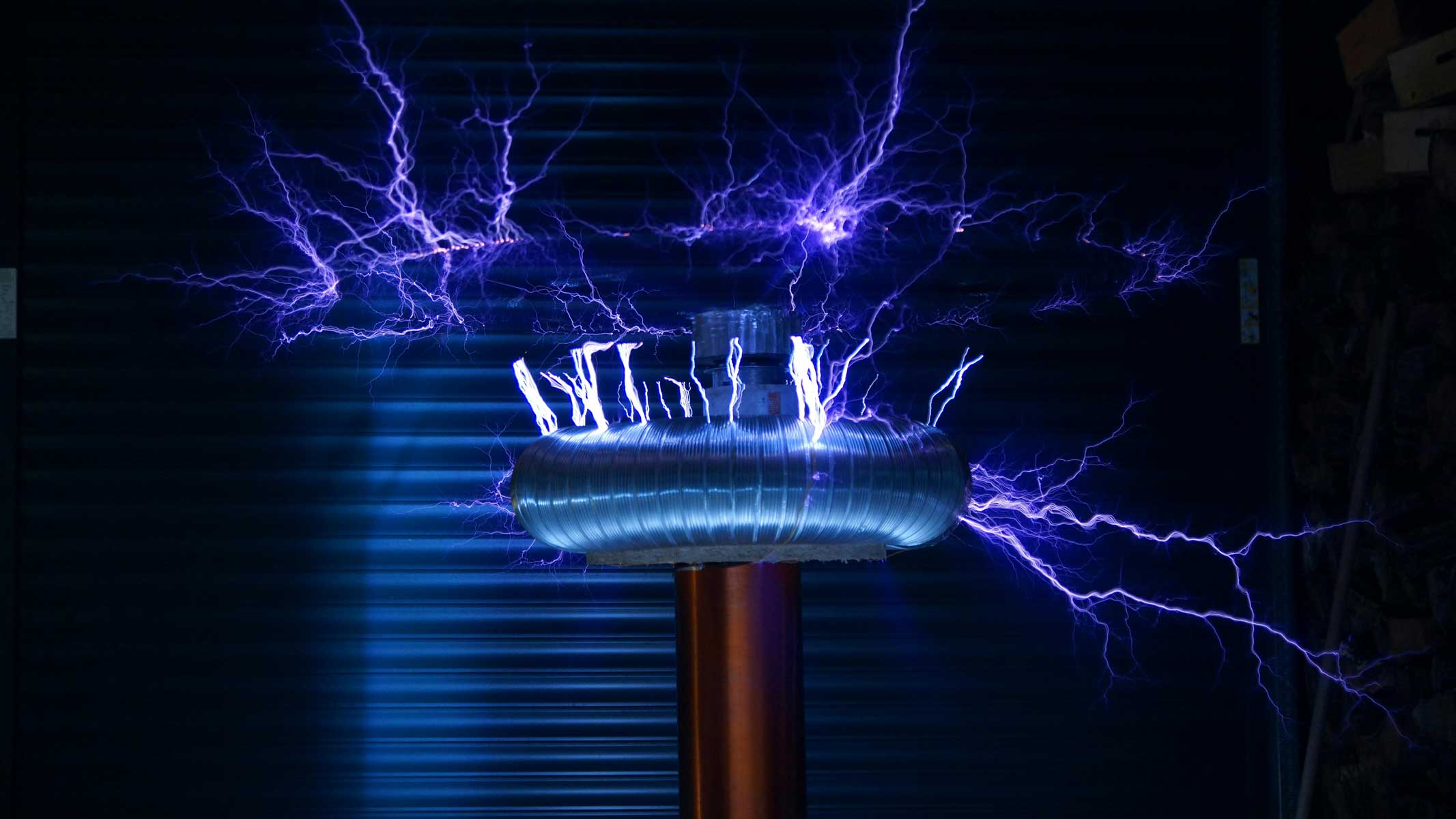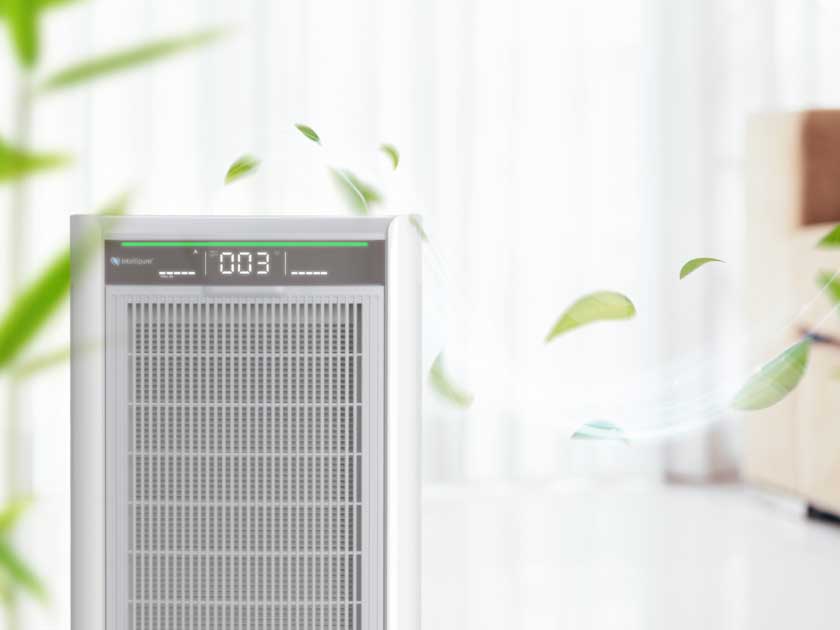
Summary
- Ionizer air purifiers use charged ions to clump particles so they fall from the air, but they don’t truly capture or remove pollutants.
- They are ineffective against gases, VOCs, and odors, and settled particles can easily become airborne again.
- Many ionizers generate ozone as a byproduct, which is a harmful indoor pollutant linked to respiratory issues and asthma attacks.
- HEPA and activated carbon purifiers are far more effective at capturing particles, allergens, and chemical pollutants safely.
- For proven, safe air cleaning, choose a multi-stage purifier with HEPA and carbon filtration rather than an ionizer.
If you are looking for a home air purifier you have probably noticed a lot of options on the market. One popular type that comes up often is an ionizer air purifier. They have been around for decades in one form or another and have been the topic of many debates when it comes to effectiveness. There is also the issue of whether they make the air worse by creating ozone. So do ionizer air purifiers actually work and are they safe? And what other options may be better for you?
What Is an Ionizer Air Purifier and How Does It Work?
An ionizer air purifier is a type of air purifier that uses charged ions as a means to clean the air. It takes advantage of the corona discharge effect using special high-voltage electrodes. A high-voltage charge passes between the electrodes causing nearby air molecules to gain or lose electrons. The air molecules are now negatively charged ions due to the newly gained extra electrons. Some ionizer air purifiers can generate positively charged ions, but negative ion units are most common.
The negative ions attach to airborne particles thanks to electrostatic attraction, similar to how a magnet works. Many airborne particles have a positive or neutral charge. The positively charged particles attract negative ions, while neutral particles can also attract negative ions. Once the charged particles have collected ions, they clump together with other particles. The clumps grow heavier until they settle onto a surface or are captured by a physical air filter.
Most air purifiers use a mechanical air filter to remove tiny particles from the air, but an ionizer air purifier causes those tiny particles to simply drop out of the air. Unless the fallen particles are collected or wiped up, they are not truly removed from the environment like with a mechanical air filter. If the particles are disturbed, they can be kicked back up into the air again. Unfortunately that means airborne particles pollutants aren’t really gone. In the past claims about the effectiveness of ionizer air purifiers leading to serious legal troubles, causing people to wonder if they work at all?
What Does an Air Ionizer Actually Do?
The main function of an ionizer air purifier is to impart an electrical charge on airborne particles in hopes that they then clump together and fall out of the air. When it comes to airborne pollutants, an ionizer air purifier pretty much only affects particle pollution. Gases, chemicals and volatile organic compounds (VOCs) are unaffected by the ionization process. For example, soot particles from smoke may clump together and settle out, but combustion gases like carbon monoxide or formaldehyde will be untouched. Ionizer air purifiers rely on the clumping effect which requires a physical particle, rendering gaseous pollutants out of range. But an ionizer air purifier does not capture particles like a mechanical air filter, it only makes them heavier or easier to collect.
Laboratory testing versus real-world results can be wildly different when it comes to ionizer air purifiers. Highly controlled laboratory testing may show efficient airborne particle decay, but in a home the actual results may be negligible.
Are Ionizer Air Purifiers Effective for Clean Air?
So now that you know how an ionizer air purifier works, we have to ask, do they actually work?
What Ionizers Can and Cannot Remove
When it comes to dust and particle removal capabilities an ionizer air cleaner doesn’t really do the complete job. While these particles might be removed from the air, they are not removed from the environment. The same applies to allergens such as pet dander, mold spores and pollen. For airborne microbes there is some evidence that air ionizers are able to inactivate bacteria in a laboratory situation, but more research needs to be done. For more complex air quality issues like smoke and odor treatment, again the main action is by gathering particles together. Gases, chemicals and VOCs can still linger even if an ionizer air purifier is present. Some manufacturers claim that ozone created by an ionizer air purifier can remove odors, but the levels of ozone required to do so would be dangerous to humans and pets. Pretty much any non-particle based pollutant won’t be affected by an ionizer air purifier.
Do Ionizer Air Purifiers Remove Allergens and Dust Effectively?
When it comes to causing allergen particles and dust to fall from the air, ionizer air purifiers can be effective. One study found that a commercial ionizer might kill dust mites on surfaces, but this effect is less so where the dust mites actually live inside mattresses or furniture. But this still does not remove the dust mites from the environment like a mechanical filter. When it comes to pollen and seasonal allergen management an ionizer air purifier can help reduce the number of airborne particles, but not remove them. Since an ionizer air purifier does not actually filter the air, the particles are simply moved out of the breathing airspace. Once the settled particles lose their charge, they can easily be carried back up into the air by any disturbance. Very little has been done toward measuring the real-world allergen reduction in homes where an ionizer air purifier is in use.
Ionizers and Ozone Generation Concerns
Some ionizer air purifiers have been found to create ozone as a byproduct of their operation. The high-voltage electrical discharge that creates ions also splits some oxygen (O2) where they can combine with other O2 molecules to create ozone (O3). The amount of ozone generated varies by device, but nearly all ionizer air purifiers create at least trace amounts. Ozone in the upper atmosphere protects the Earth from harmful ultraviolet radiation, but at ground level it is classified as a harmful pollutant.
Ozone exposure poses multiple health risks. Short term exposure can cause coughing, wheezing, shortness of breath and inflame airways. It can also cause throat irritation and chest pain. After exposure it may be harder to breathe in and out. Ozone can also trigger asthma attacks and aggravate bronchitis and emphysema. Long term exposure can lead to increased incidents of respiratory illnesses. While the EPA does not set a limit on ozone generated by ionizer air purifiers, it does clearly state the harm caused by indoor ozone exposure. The state of California does regulate ozone emissions from air cleaners to no greater than 0.05 parts per million.
To minimize ionizer air purifier ozone exposure make sure to look for California Air Resources Board (CARB) certification and third-party ozone level testing. Avoid any units sold as an ozone generator. Some high-voltage ionizers may generate more ozone, so look for testing documentation. It is easy to see why the tendency for ionizer air purifiers to create ozone pollution makes them controversial as an air cleaning device.
Safety Concerns and Side Effects of Ionizer Air Purifiers
When it comes to using an ionizer air purifier there are some things you need to know.
Is It Safe to Be in a Room With an Ionizer?
Due to the potential for ozone exposure, it is not recommended to be in the same room as a running ionizer air purifier. If you begin to cough, feel a tightness in the chest, or experience breath difficulty when near an ionizer air purifier it is advised to leave the room. Children, older adults, asthma sufferers or anyone with respiratory conditions are particularly at risk from ozone exposure. If you choose to use an ionizer air purifier make sure it is CARB certified or tested for low ozone emissions. If possible use a HEPA air purifier in the same area to help capture particles from the air. Read the ionizer air purifier owner’s manual and follow the operating instructions exactly. If at any point you experience respiratory issues, discontinue use of the unit and leave the room.
Should You Sleep With an Ionizer On?
While near-silent operation is a positive trait of ionizer air purifiers, it is not recommended to use them while sleeping. The risk of ozone exposure while in an enclosed space like a bedroom can cause respirator issues. These respiratory issues can not only affect sleep quality but also lead to health issues. This is especially true for sensitive individuals and those in at-risk groups. There is also the issue of settled particles collecting on bedroom surfaces where they can become airborne again if disturbed. The best solution for bedtime air cleaning is a HEPA equipped air purifier which captures and removes airborne contaminants.
How Ionizer Air Purifiers Compare to HEPA Filters
There are some major differences in how these two air cleaning methods operate.
Differences in Effectiveness You Should Know
When it comes to particle capture rates there is a big difference between ionizers and HEPA systems. Since ionizer air purifiers don’t actually capture particles themselves, they have no capture rate. They have to rely on particles attaching themselves to surfaces around the room. A HEPA filter physically captures particles in the filter media where it is retained for disposal. An ionizer air purifier uses very little energy due to no moving parts while a portable HEPA air purifier uses a motorized fan to draw in air. Typically there is very little maintenance for an ionizer air purifier other than keeping it clean, while a HEPA air purifier requires regular filter replacement.
Which Technology Works Better for Your Needs?
In most cases a HEPA air purifier is a better solution for air cleaning than an ionizer air purifier. In the case of extremely small particles (approximately 0.01 microns) an ionizer air purifier may be better able to cause particle clumping and in turn reduce airborne particulates. Residential ionizer air purifiers are typically designed for small spaces (less than 300 square feet), whereas HEPA air purifiers can scale up to hundreds of square feet. When it comes to budget an ionizer air purifier typically has lower ownership cost due to lower initial price and low maintenance needs. Often manufacturers will combine air cleaning methods to improve air purifier efficiency. Combining an ionizer with a HEPA filter can increase overall particle capture rate.
Alternatives to Ionizer Air Purifiers
If you’ve decided that an ionizer air purifier isn’t for you, there are other options.
HEPA Filtration Systems for Proven Results
There is a reason why the air purifier market is dominated by HEPA filter equipped units: they work. The technology behind HEPA filtration is well understood and extremely effective at removing particle pollution. To be classified as a HEPA filter it must capture 99.97% of airborne particles down to a size of 0.3 microns in a single pass. HEPA filter designs may vary in complexity, but filter operation itself is as simple as drawing air through it. If the HEPA filters are changed regularly there is little other maintenance to do. Most portable HEPA air cleaners consist of an electric fan and a sealed filter chamber making them extremely reliable. When properly maintained with routine filter changes, a HEPA air purifier can be a long-term health investment.
Multi-Stage Filtration Without Ionization
While HEPA air purifiers are great at capturing airborne particles, they can’t do anything about gases, chemicals, VOCs or odors. That’s why it is common to include an activated charcoal filter with a HEPA air filter. By using both of these filter types it is possible to capture most airborne pollutants effectively. Passing air through not only a HEPA filter but an activated charcoal component leads to much cleaner air than either method alone.
Making an Informed Decision About Ionizer Air Purifiers
If you are considering buying an ionizer air purifier you need to be informed.
Questions to Ask Before Buying an Ionizer
Before choosing an ionizer air purifier make sure to look for the ozone production levels and any certifications. Ideally look for third-party independent testing and verifications. Read the warranty and return policy in regards to unsatisfactory performance. Call the customer service or technical help lines to see if anyone answers. Finally ask about the total cost of ownership.
Red Flags in Ionizer Marketing Claims
If something seems too good to be true, it probably is. Watch out for exaggerated health benefit claims and unrealistic particle removal boasts. A lack of any testing data about performance or ozone production is a red flag. Finally beware of phony customer testimonials without any scientific proof.
If You Already Own an Ionizer Air Purifier
Already have an ionizer air purifier? Make sure to read the owner’s manual completely. Keep an eye on your indoor air quality and if any health issues appear. Don’t feel compelled to keep using an ionizer air purifier if it doesn’t meet expectations. Simply take it to your local electronics recycling center and find an air purifier that uses a different air cleaning method.
Choosing Air Purification Technology That Actually Works
The limitations of an ionizer air purifier along with the potential for ozone exposure don’t make a very compelling argument for an indoor air quality investment. Intellipure offers air purifiers that offer proven technology backed by third-party testing. Don’t gamble on your family’s health over inflated marketing claims with no foundation. When it comes to the air you and your family breathes, invest in an air purifier that is proven safe and effective.

_(1).jpeg) Are Cooking Odors and Smoke Dangerous?
Are Cooking Odors and Smoke Dangerous?



